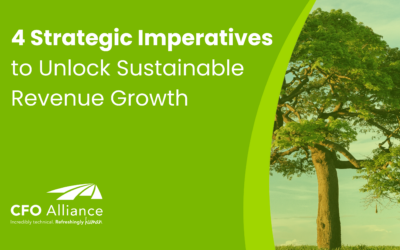Is the Rule of 40 the Only Valuation Metric
You Need to Care About?
It’s a rule to live by
How do you know when your company is performing well enough to secure funding? In the tech industry, investors and stakeholders often rely on the Rule of 40.
Valuation Metrics to Secure Funding
In a nutshell, the Rule of 40 says that a company’s growth rate plus profit margin should equal at least 40%. It’s a handy high-level benchmark for two reasons:
- It demonstrates whether a company can maintain strong shareholder returns in periods of growth.
- It can be used to assess a company’s operating performance at a glance.
The Rule of 40 works well for SaaS and other tech companies that typically operate at high margins, especially when they have matured beyond the early stages to reach a sustainable revenue.
Is the Rule of 40 really the defining measure of success?
According to McKinsey, only about one-third of software companies actually meet the Rule of 40 standards. Even then, they only sustain that rate of growth about 16% of the time. It’s a tough standard to meet, but it also comes with substantial rewards. Companies that remain at or above this magic number consistently achieve higher multiples.
Still, the Rule of 40 leaves a few things to be desired. Because it’s just one number, it can’t show nuance, and it’s not as useful for early-stage tech startups or companies outside the tech industry that don’t operate at similarly high margins.
That’s why some investors choose other metrics to provide a better overall picture of a company’s performance and growth potential as compared with the Rule of 40.
Let’s take a look at how some of those other valuation criteria can help you keep a firm grasp on your company’s financial performance as you seek to attract investor interest.
Which Valuation Metrics Do High-Growth Companies Have in Common?
In the last quarter of 2021, Pocket Network, a Tampa-based blockchain company, generated 14X revenue growth, totaling $215 million in total revenue. The company is currently valued at over $1.5 billion and has raised approximately $22 million in funding.
What are investors looking for when they invest in companies like Pocket Network? What key metrics will they want to see? That’s a great question, and it varies among industries as well as by growth stage.
The good news, however, is that high-growth companies share some key factors in common when it comes to driving valuation. As you move beyond the early stages of business and begin to prepare for Series A funding, you will want to keep a close eye on metrics like these:
Annual Recurring Revenue (ARR) Growth
ARR growth serves as a key indicator of the potential for investors, and it can contribute to impressive valuation and funding. It is a critical metric to watch because it predicts future performance. For example, a $10 million company must grow by 55% year-over-year to remain in the top quartile, and venture-backed companies demonstrate growth at twice the rate of their bootstrapped peers.

Enterprise Value to EBITDA Ratio (EV/EBITDA)
Enterprise value measures the total value of a company’s operations including debt. When compared with earnings as represented by EBITDA, this metric will show overall cash flow. Since cash flow may be much less than total earnings, the EV/EBITDA ratio gives a better indication of a company’s actual performance.
Net Revenue Retention
This metric examines a company’s ability to drive growth among existing customers while factoring in churn. The median rate for SaaS companies in the top quartile is 130%, while those in the top 10% achieve 160% or more.
Gross Margins
A simple calculation of revenue minus cost, gross margin indicates an ability to make reasonable profits as long as costs can be effectively managed. It’s a basic metric, but that doesn’t make it any less critical for earning investor interest.
Last 12 Months (LTM) Free Cash Flow Percentage
For mid-size to large SaaS companies, this metric demonstrates cash flow as a percent of revenue. It is one factor in determining the Rule of 40, but it can be useful in its own right by demonstrating the viability of the business and its ability to generate profit.
How to Leverage Key Metrics to Attract Investors
The metrics above are some of the most common data points used in determining valuation multiples. When companies perform well in all of these areas, massive deals can be the result. Here are two cases in point:
- Pipe, a Florida-based fintech platform, has seen exponential growth over the past two years. In 2021, Pipe raised $250 million in funding and was valued at $2 billion with an ARR of more than $1 billion.
- In 2022, Vu Technologies announced a historic $17 million in seed funding for Vu Studio. They will use the influx of capital to accelerate the expansion of their revolutionary virtual reality film studio and propel further growth.
Deals like these demonstrate the critical importance of having the right data and metrics to attract funding. If you are ready to pursue Series A funding, you will require increased financial visibility into real-time metrics like ARR, growth margins, cash flow, and churn. It’s the only way to convince investors that your company demonstrates substantial profit and growth.
But how do you know when you have achieved that critical mass?
Benchmarking – Prepare your company for investor interest by conducting regular benchmarking with key metrics. Companies that get massive amounts of funding know how to demonstrate their value to investors, and that is only possible through regular data monitoring.
Data-Based Targets – Use KPIs to prioritize your targets and determine where you need to make adjustments based on performance data. If you are aiming for the Rule of 40, for example, be willing to adjust cost structures to manage cash flow and support growth.
Robust Financial Structures and Processes – As you grow, you will need scalable, automated systems and processes to eliminate errors, capture the right data, generate necessary reports on time, and maintain financial visibility.
KPIs Alignment with Value Drivers – Data is critical, but it can’t deliver value on its own. Only when you align your KPIs with specific business objectives can you drive the kind of growth and value that will carry weight with investors.
The Right Financial Talent – Having the right financial leaders in your corner will ensure that you have the right data at hand when you need it. You’ll also be able to trust that you have best people in place to manage both financial strategy and execution.
As you evaluate your metrics and KPIs, be sure they are aligned with internal business goals as well as investor requirements. Once you have determined where you want to go, consider how you are reporting and measuring your data. When you have clear visibility, efficient systems to manage data, and a financial team you trust, you’ll be in the right position to secure funding and grow.
Take Your Next Step With Confidence
At CFO Alliance, we close deals like these for growth companies every day. It’s part of our mission to help our clients prosper. If you’ve been approached by an investor or you’re ready to pursue funding, we’re here to make the process smooth and straightforward. Contact us today to see how we can help you take the next step on your growth journey!

Related Post
4 Strategic Imperatives to Unlock Sustainable Revenue Growth
4 Strategic Imperatives to Unlock Sustainable Revenue GrowthCreating long-term, sustainable revenue growth takes more...
Future-Proof Your Workforce with a Modern Talent Agenda
Future-Proof Your Workforce with a Modern Talent AgendaWhat does the future of talent look like? It’s a fair question,...
The Talent Behind the Tech: How Skills-Based Hiring Supports Technology Innovation
The Talent Behind the Tech: How Skills-Based Hiring Supports Technology InnovationStaying relevant with technology in...




